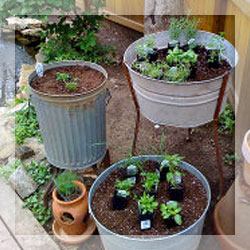How to Grow Your Own Herbal RepellentsFor those people with a green thumb, you can grow your own herbal repellents. It’s a fantastic way to enjoy gardening while finding an organic use for repelling rodents. When rodent repellents are your main goal for your garden, make sure you focus on specific herbs that are most effective for the focus in which you have chosen.
Repellent Herb PlantsWormwood. Rue. Pyrethrum. Lavender. Mint. Catnip. Lemongrass. Basil. Sage. While growing these useful plants for herb repellents, it is common to grow them in areas where they will be effective during the growth phase. Make sure to properly water the plants and give them sufficient sunlight for proper nutrient growth. If cats are an issue, keep the rue around the growing herbs to deter them from eating or chewing them for extra protection. When harvesting the plants for herb repellents, they are usually dried and place into a container. For example, lavender is dried and contained into clothing drawers. Others dry the plants and hang them from entranceways such as kitchens or doorways. Make sure to properly research the uses for herb repellents before harvesting plants to create the most effective solution.
|
Copyright (c) 2010 All Right Reserved - RepelAll.com
Garažna vrata najMOJSTER Gradnja Prenova Ogrevanje Klima Adidas Vrata Okna Ograje Talne obloge Rolete Strehe Fasade Asfaltiranje Tlakovanje eClanki
Kopačke Superge Šprintarice Trenirke Promocijske zapestnice Promocijski ovratni trakovi

 Delicious
Delicious Digg
Digg Facebook
Facebook Google Bookmarks
Google Bookmarks Reddit
Reddit Stumbleupon
Stumbleupon Yahoo My Web
Yahoo My Web Spurl
Spurl Wists
Wists Newsvine
Newsvine Furl
Furl Ma.gnolia
Ma.gnolia Fark
Fark